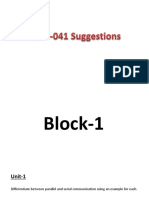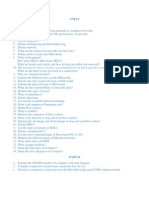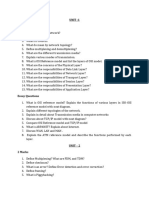0% found this document useful (0 votes)
7 views2 pagesComputer Networks Question Bank
The document is a question bank for Computer Networks, organized into three units covering various topics such as the OSI Reference model, TCP/IP protocols, error detection methods, and network layer responsibilities. Each unit contains detailed questions that require explanations, comparisons, and illustrations of key concepts in computer networking. The questions also address protocols, transmission media, and network devices, providing a comprehensive overview of the subject matter.
Uploaded by
dragongohan87Copyright
© © All Rights Reserved
We take content rights seriously. If you suspect this is your content, claim it here.
Available Formats
Download as DOCX, PDF, TXT or read online on Scribd
0% found this document useful (0 votes)
7 views2 pagesComputer Networks Question Bank
The document is a question bank for Computer Networks, organized into three units covering various topics such as the OSI Reference model, TCP/IP protocols, error detection methods, and network layer responsibilities. Each unit contains detailed questions that require explanations, comparisons, and illustrations of key concepts in computer networking. The questions also address protocols, transmission media, and network devices, providing a comprehensive overview of the subject matter.
Uploaded by
dragongohan87Copyright
© © All Rights Reserved
We take content rights seriously. If you suspect this is your content, claim it here.
Available Formats
Download as DOCX, PDF, TXT or read online on Scribd
/ 2























































